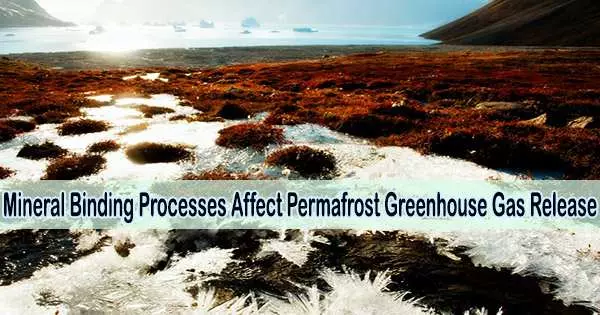Greenhouse gases (GHGs) are gases present in the Earth’s atmosphere that contribute to the greenhouse effect. The greenhouse effect is a natural process that regulates the Earth’s temperature by trapping heat from the sun, allowing the planet to sustain life.
Microorganisms have a harder time using about a quarter of the organic carbon found in ice-rich Arctic permafrost. This is because the organic material, which comes from dead plant remains, is strongly bound to mineral soil particles.
That is the result of a study conducted by a research group led by Professor Dr. Janet Rethemeyer and Dr. Jannik Martens at the University of Cologne’s Institute of Geology and Mineralogy. The release of greenhouse gases from permafrost deposits must therefore be predicted accurately, which is more difficult than previously thought.
The results of the joint project, which was funded by the German Federal Ministry of Education and Research (BMBF), are published in the article ‘Stabilization of mineral-associated organic carbon in Pleistocene permafrost’ in the journal Nature Communications.
Comparatively speaking to other regions of the planet, the Arctic is warming incredibly quickly. It is largely buried in permafrost and has a high carbon content almost twice as much as the atmosphere. This carbon is derived from plants that have grown over many millennia, broken down in the soil, and then “frozen.”
Predictions of interactions between thawing permafrost and climate are very complicated because the microbial degradability of the organic material in the sediments has varied greatly over the last 55,000 years. This is due to the different climatic conditions during this long period of deposition.
Professor Dr. Janet Rethemeyer
Due to strongly rising temperatures in the Arctic, this gigantic freezer is thawing fast. Microorganisms can now breakdown the old carbon trapped in it, releasing carbon dioxide and methane into the environment.
The warming process is accelerated by these greenhouse gases. More greenhouse gases are produced from the permafrost as the climate warms, which raises temperatures and accelerates the thawing of frozen soils and sediments.
“There is a feedback of carbon in permafrost with climate, the strength of which depends largely on those factors that influence microbial degradation,” said Janet Rethemeyer.
In the joint research project, scientists from the Institute of Zoology at the University of Cologne, the University of Tübingen, the Technical University of Munich, and the Alfred-Wegener-Institute in Potsdam studied long permafrost cores from the Siberian Arctic.
The cores are made of extremely ice-rich, fine-grained sediments that are loess-like in our latitudes and were deposited over vast swaths of Siberia and Alaska during the last ice age. The cores, up to 12 metres long, comprise sediments deposited over a period of up to 55,000 years.
The analyses of the permafrost cores show that a significant part (25-35 %) of the carbon is associated with the mineral particles and thus more difficult to access for microorganisms.
“Predictions of interactions between thawing permafrost and climate are very complicated because the microbial degradability of the organic material in the sediments has varied greatly over the last 55,000 years. This is due to the different climatic conditions during this long period of deposition,” Janet Rethemeyer explained.
The binding of carbon to the mineral particles was worse under warmer, wetter settings, while the binding was stronger under colder, drier conditions, especially to iron oxides. Stronger binding to iron oxides means that the decomposition rates of old plant material are lower, as Professor Dr. Michael Bonkowski from the Institute of Zoology, Department of Terrestrial Ecology at the University of Cologne has shown in laboratory experiments.
“These new findings can make a significant contribution to making computer models for forecasting greenhouse gas emissions from thawing permafrost more reliable,” said Jannik Martens, who is currently conducting research at Columbia University in New York.





